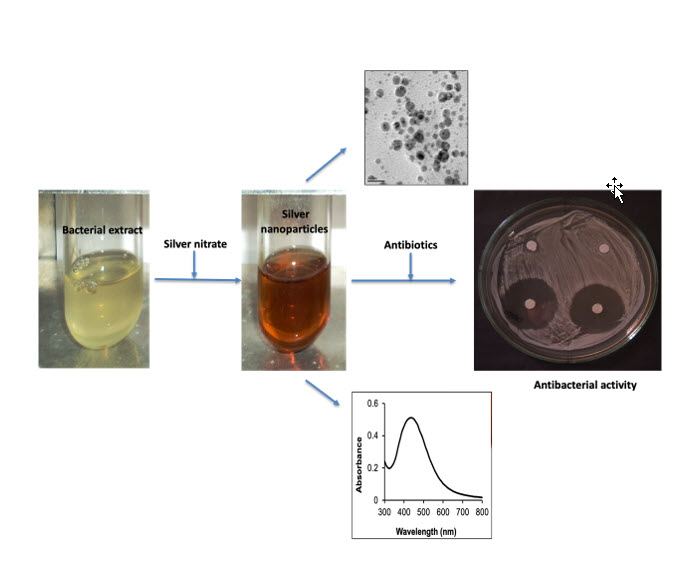Mon, Nov 25, 2024
[Archive]
Volume 21, Issue 1 (March - Special Issue 2024)
IJMSE 2024, 21(1): 32-41 |
Back to browse issues page
Download citation:
BibTeX | RIS | EndNote | Medlars | ProCite | Reference Manager | RefWorks
Send citation to:



BibTeX | RIS | EndNote | Medlars | ProCite | Reference Manager | RefWorks
Send citation to:
Singh R. Antibacterial Activity of Biosilver Nanoparticles in Combination with Antibiotics. IJMSE 2024; 21 (1) :32-41
URL: http://ijmse.iust.ac.ir/article-1-3533-en.html
URL: http://ijmse.iust.ac.ir/article-1-3533-en.html
Abstract: (5940 Views)
Drug-resistance among bacteria is a concerning issue in medical field. Silver nanoparticles (AgNPs) are one of the promising novel nano-antibiotics. In the present study, AgNPs were synthesized using cell-free extract of Acinetobacter sp. challenged with silver nitrate. Preliminary observations done using UV-Vis spectrophotometry at 420 nm. Complete reduction of silver ions to AgNPs was confirmed through cyclic voltammetry. Electron microscopy revealed formation of spherical shaped nanoparticles of size upto 20 nm. These AgNPs were furthr used to determine their effect on activity of various antibiotics against pathogenic bacteria such as Neisseria and Xanthomonas. Higher antibacterial activity of AgNPs was observed against Gram-negative bacteria. Enhanced antibacterial action of AgNPs was observed with selected beta-lactam antibiotics producing upto 3-fold increase in area of zone of inhibition. On exposure to AgNPs, the minimum inhibitory concentration and minimum bactericidal concentration of antibiotics were lowered by upto 2000 times indicating potential synergistic action of AgNPs. This study clearly signifies that the drug, proved to be inefficient due to bacterial resistance, could be made functional again in presence of AgNPs. This will help in development of novel antibacterial formulations containing antibiotics and nanoparticles to combat multiple drug-resistance in microorganisms.
Type of Study: Research Paper |
Subject:
Biomaterials
Send email to the article author
| Rights and permissions | |
 |
This work is licensed under a Creative Commons Attribution-NonCommercial 4.0 International License. |







